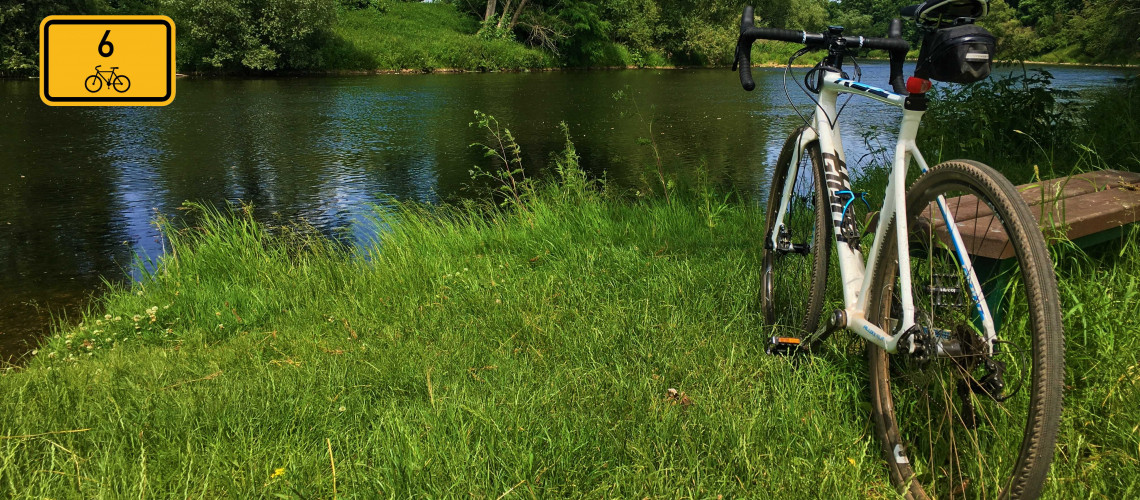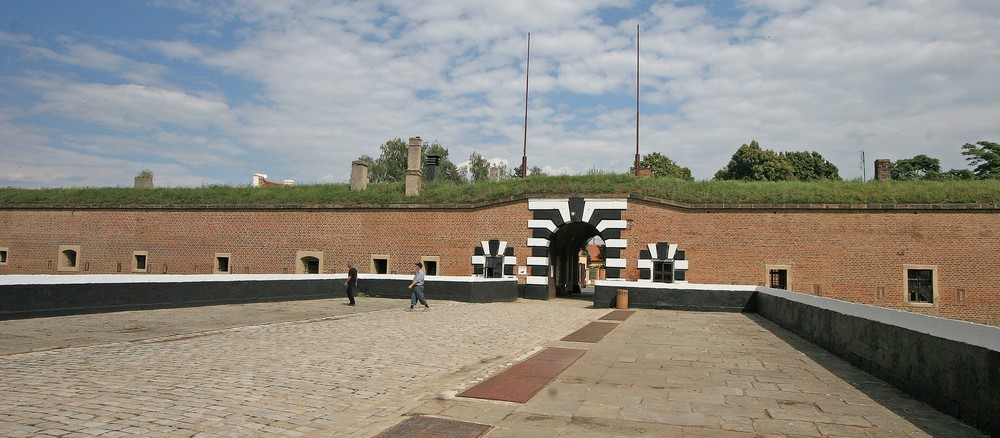
Bike path Ohře
The Ohře bike path is one of the four backbone bike paths in the Ústí Region.
In total, the cycle route along the Ohře River has more than 260 km, of which about 140 km is in the Ústí Region. In the Central Bohemian Uplands, the length of the route is 53 km. The surface of the route is asphalt and in some places a field or forest reinforced road. The route is not difficult to follow, but in some places it goes along a busy road. The route goes through the towns of Louny - Počedělice - Koštice - Křesín - Levousy - Poplze - Libochovice - Kostelec nad Ohří - Budyně nad Ohří - Doksany - Brozany nad Ohří - Bohušovice nad Ohří - Terezín - Litoměřice
Where to go and where to take a break?
In Libochovice, the Libochovice chateau is worth a visit. Then it is possible to stop and refresh yourself in the Dvůr Perlová Voda homestead. The route continues to the town of Budyně nad Ohří, where there is a historic water castle (castle surrounded by water) from the 13th century. From Budyně, the route then continues along road No. 118 to Doksan. In Doksany you can visit the monastery and the castle. The monastery complex is divided into 4 courtyards and is dominated by the parish church of the Nativity of the Virgin Mary. Behind the Baroque gate you will find a plague column, a sculpture of the Virgin Mary and a crypt. Behind the village Doksany, the route is again separated from the road and goes through the village Brozany nad Ohří, where it is possible to stop and visit the fortress of Brozan. The fortress was destroyed several times, but it is reconstructed now and you will find the coats of arms of all the owners of the fortress. They are painted on the walls. For the time being, when you leave the village you will go on a road to Bohušovice nad Ohří. Bohušovice is known mainly because that ancient archeological finds have been excavated here, such as pottery from the late Stone Age and skeletal graves from the Roman period. After Bohušovice you will already be arriving in Terezín. The city was founded at the end of the 18th century as a military fortress. It offers very interesting sights that are worth visiting. We will learn all about the local fortress in the visitor center in Retranechement 5, where it is possible to arrange tours of the fortress's underground. Another tourist destination in Terezín is the so called Small Fortress, where we commemorate the sad events, which took place here during the Second World War. From Terezín, the route leads us through the Litoměřice golf course, where Ohře flows into Elbe. Litoměřice is a royal town and you can find the baroque cathedral of St. Štěpán, Kalich viewpoint or a castle with an exposition about viticulture. If we want to see the city, we can park our bikes in the new bike tower at the bus station. Behind the Tyrš Bridge in Litoměřice, the Ohře bike path connects to the Elbe Trail and ends here.
Stops

Terezín - The Samll Fortress
The so called Small Fortress is a significant element of Terezín, where a permanent exhibition on the history of the police prison is located (since 1994).
The Small Fortress is an important feature of the Terezín town. It was built together with the whole fortress at the end of the 18th century. Since 1994, there has been a permanent exhibition about the history of the police prison.
The history of the prison is not connected with the Small Fortress only because of World War II. Already in the 19th century there was a jail for political prisoners. In 1918, Gavrilo Princip, who assassinated František Ferdinand d’Este’s, died in the prison.
Starting in 1940, it was the infamous seat of the Prague Gestapo prison. About 32.000 prisoners went through the barracks of the Small Fortress. Executions, starvation, inhuman treatment and typhus epidemics caused the deaths of 2.600 people. But even when people survived the hell of Terezín, their suffering was not over. The Terezín prison was just a transfer station to other prisons, jails, and concentration camps in the Germany-occupied countries.
The violence was not just within the Small Fortress walls. In 1941, the whole Terezín town became a ghetto: an internment and transfer camp, where Nazis gathered Jews. It’s where thousands of people set off for their last journey – into extermination camps. Before the end of the war, more than 150.000 thousand people were transported to Terezín. Starvation, epidemics and terrible conditions caused death of 35.000 people directly in Terezín.
Contact
Address
Památník Terezín, státní příspěvková organizace
Principova alej 304
Phone Contact
+420 604 241 179
Email
pamatnik@pamatnik-terezin.cz
Website
www.pamatnik-terezin.cz
